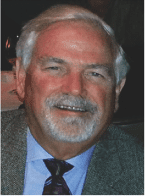Fitting hearing instruments with a refundable 30-day trial period has been the industry’s unofficial policy longer than many hearing health providers have been alive. In the early days of hearing aid technology, instruments were about as advanced as the Model “T” is compared to the latest SUV. There is no comparison between those ancient relics and the digital hearing instruments available today. Yet, the industry and most specialists still lack confidence in the new technology. Hearing aids are offered apologetically with the assurance that they can be returned if, for any reason, the patient has difficulty adjusting to amplification.
Consumer self-help groups and legislators have intervened by pressing for regulations to mandate a trial period. These groups may be well meaning, but they often take a “throw the baby out with the bath water” approach to protect everyone. While there may be isolated cases of abuse, there is no logical reason to mandate a trial period—often as much as one year for all purchasers of hearing instruments.
It is obvious that most patients will have difficulty adjusting to amplification. There are also sound reasons why a trial period is counterproductive to the patient’s ability to adapt to hearing aids.
Accepting Responsibility for Dealing with a Hearing Loss
According to the literature, the time between the average patient’s awareness of a hearing difficulty and his/her first steps to remediating the problem is about seven years. During this time, the patient may become less communicative and demonstrate signs of emotional withdrawal. A hearing-impaired person may exhibit mild paranoia as her or she is less able to understand speech. It is not uncommon for people with hearing loss to complain that others mumble or talk behind their back. As the social withdrawal becomes more evident, the patient may rely on a spouse or child to be the enabler who will interpret important information for them. These individuals often seek help only after an emotionally trying event has taken place, such as the death of the spouse who interpreted for them, or the shift from employment into retirement. Often a child who is their caregiver brings a parent into the hearing clinic. In most cases, the events leading up to the hearing evaluation and the issuing of a hearing instrument are unpleasant.
The events leading up to the fitting of hearing instruments are always the result of a loss. The loss of function—in this case, hearing—and the loss of independence or a loved one leads to denial and mourning. Perhaps the loss of youth that is associated with presbycusis is the most traumatic loss of all. Most practitioners have witnessed the denial that a person with a significant hearing loss exhibits. Now the patient is confronted with a choice. Yes, there is a hearing loss and the loss cannot be cured medically. Yes, the loss is interfering with the person’s lifestyle. Yes, hearing aids are the only treatment available.
But wait, the patient has an option. If he/she does not like the hearing instruments, they can be returned. There is a light at the end of the tunnel. Unfortunately, without commitment, there is no hope of rehabilitation. The trial period gives that patient a way out. He can pretend to wear the aids until the trial period is up, then reject them without sanction. He can then recount sadly that the hearing aids did not work for him and that everybody just has to speak louder from now on.
Rehabilitation is not effective without commitment. Commitment is the basis for all rehabilitation, whether it is addiction recovery, weight reduction or post-stroke therapy. If the patient is not motivated (committed), then therapy will not work.
The hearing care professional’s permission to return the hearing instrument sends a subtle message that hearing instruments do not work. There is also an intimation that the devices are not perfected and, therefore, the dispensing professional’s treatment plan may be flawed. No other professional health care provider allows the patient to control the course of treatment in this manner. Dentists, chiropractors, physical therapists and speech pathologists all guide the treatment and expect that the patient will follow it. Only the hearing care professional allows the patient to deem whether their hearing is improved through amplification.
Those who disagree with the statements above may argue that hearing is temporal and, unlike vision, hearing improvement may not be measured accurately. However, real ear measurement and programmable/digital hearing instruments have taken most of the guesswork out of fittings. Hearing improvement can be documented using a number of reliable objective and subjective tests, and there is no persuasive reason to suggest that the patient can be the only judge of hearing improvement.
Responsibility along with motivation is a factor in making a commitment. Once a person accepts the responsibility for using hearing instruments, he/she has gone a long way toward acceptance and rehabilitation.
Ownership and Habituation
Personal ownership is indigenous to Western culture. This is evidenced by how we view a rental car as opposed to one we own, and how tenants in rental houses do not take the same care of it as people who own their homes. Likewise, the hearing instrument that is owned by the user is more likely to be accepted than an aid that is used for a temporary trial period. Individuals with a hearing loss need to take personal responsibility for treatment. In most cases, treatment requires the use of hearing instruments. There is no other option.
Another aspect of hearing aid use is learning how to operate it. Inserting the battery, placing the aid properly into the correct ear, increasing the gain to an appropriate level and remembering to remove the aid and turn it off are simple steps for most people. However, elderly hearing-impaired people sometimes lack the full capacity for learning new material. A person must attend to detail in the correct sequence to operate a hearing aid effectively. He/she must also be diligent enough to turn the aid off and keep it free from earwax. These learned behaviors may be difficult for someone who lives alone without supervision. There is a temptation to leave the hearing aid out, especially if the wearer lives alone. The operation of the hearing instrument is quickly forgotten. When the instrument is needed, the patient may forget how to operate it and blame the hearing care professional. The excuse that the aid is too hard to get used to often results in its return within 30 days. Without commitment and practice, the hearing aids are quickly relegated to a dresser drawer.
A major consideration in the acceptance of amplification is habituation. Unlike learning, which requires repetition and diligence, habituation is a process of re-acquainting the hard-of-hearing person with the auditory world. A common complaint is that sounds are too loud or annoying. Are the loudness and annoyance related to excessive output, or has the patient simply accommodated himself to a silent world? How many times have patients complained that the sounds of traffic are too loud, or that their voice sounds unnatural to them? Humans are one of the most adaptable of all creatures. We can adapt to almost anything (including silence!). When our preconceptions of what is normal are changed—in this case with amplification—our first reaction is to reject the changes. How can a 30-day trial enable most hearing-impaired individuals to accept the shock of hearing our noisy world? If the loss took an average of seven years to acquire, how can we expect someone to habituate amplified sounds through a hearing aid in a short 30-day timespan?
It can take a client with a difficult -to-fit hearing loss many months of daily use before he/she can fully appreciate hearing through properly fitted hearing instruments. The 30-day trial is hardly enough time for someone to reacclimatize to ambient sounds. Instead of watching the 30-day time clock, the hearing care professional should concentrate on aural rehabilitation activities to help a person relearn how to cope with various environmental sounds. Hearing instruments are one part of a total aural rehabilitation program and it often takes much longer than 30 days to use hearing instruments successfully. At least one dispensing retail network has recognized the importance of hearing rehabilitation by offering a 60-day return with hearing education classes. If these classes are truly an attempt to re-acquaint the person with a hearing world and not merely a sales tool, then the rest of the industry might follow their lead. However, even 60 days with classes may not be enough for a person living alone with little auditory stimulation to fully adjust to the new sounds.
Special Cases
Are there instances in which a trial period is recommended? Yes, when there is doubt that hearing instruments can result in improvement. Cases where ototoxic drugs have wiped out all but a little hearing, and patients who have iatrogenic losses from a possible viral infection are two instances in which prescribing hearing instruments may be questionable (they may work for some patients and not for others). Patients with profound corner audiograms pose a difficult challenge and may necessitate a trial period to determine if the aids are effective. Also, patients with very mild losses who wish to try amplification for specific situations, such as a professor who cannot hear his students in a lecture hall, are candidates for a trial period. Patients who have multiple cognitive problems such as dementia or Alzheimer’s disease may not respond to amplification. They should be fitted on a trial period since the therapist and caregiver may not be able to quickly assess whether hearing aids result in any improvement.
Summary
The currently mandated trial period for hearing aid use should be changed so that trial periods are not granted universally. In the author’s opinion, only in specific situations in which the practitioner, patient and caregiver agree that hearing instrument use may not meet expectations should it be granted. Other factors such as motivation, ability to learn over a long period and habituation to amplified sounds should be considered before a trial period is offered. To do otherwise is a disservice to the population we are committed to helping. w
Reference
Granville B: Non-auditory problems of hearing aid users: Attention and memory. Audecibel, 1994.
Granville Y. Brady, Jr., MA, BC-HIS, owns and operates dispensing offices in Clifton & East Brunswick, NJ. Correspondence can be addressed to HR or Granville Brady Jr., P.O. Box 68, Bound Brook, NJ 08805; email: [email protected].




